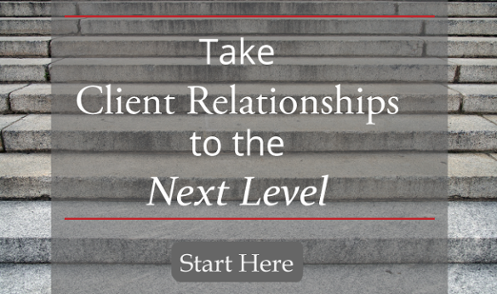How to Approach an Inbound Sales Call
Did you know that around 92% of all customer interactions take place over the phone?
This means being able to communicate effectively over the phone is a skill worth perfecting. You need to be able to seamlessly handle objections, address concerns, and answer questions.
Whether you're in a sales or customer success role, there are four things to consider when speaking with prospects and customers over the phone:
- Slow Motion
- Agree
- Know
- Can I Ask?
Slow Motion
If we were able to slow the sales process with a magic remote control, we would see that an inbound sales call can be neatly broken down into 4 basic parts:
Part 1: Receive Call
First, you receive a call, you speak and identify yourself. You kindly greet your prospect and proceed to ask a question such as, "How can I help you?" or "What made you call today?" or "Is this the first time you've ever called us?" This question acts as a steering wheel and sets in motion the rest of the call.
Part 2: Explain the Reason for the Call
Second, the client will explain his or her reason for calling. Typically this is a question, and usually the intent of the call. Perhaps he asks you to describe your offering in more detail, or questioned why you would be a better choice than his current service provider. You then proceed to skillfully present your line of reasoning, explaining the differences between “us and them."
Part 3: Ask a Qualifying Question
Third, you'll need to ask a qualifying question, “What made you reach out to us today?" or "Is this something you are looking to do or implement now?" These type of questions will help you identify the caller's level of interest, provides more insight into their situation, and helps you determine where to take the conversation next.
Part 4: Get a Reaction
Finally, you ask qualifying questions to get answers and a reaction. Based on the caller's responses, it will help you determine where this opportunity should go in your pipeline.
Once you begin to notice this basic four-part pattern throughout your calls, everything you hear your clients say will start to look less like a puzzle and more like this step by step pattern. When you begin to visualize how the conversations will unfold, anticipate objections, and plan follow-up procedures, you will gain much more confidence and be ready for “every next step.”
Agree
When you're speaking with someone, and you say, "You know what? You're right," you grab their attention. Conversly, when you say, "You're wrong," that’s when you hear the belly of an argument begin to churn.
Some salespeople make the mistake of approaching a sale like a prize winning boxer approaching the ring. They will respond to a customer who says, "Oh, I'm not interested" with argumentative phrasing.
For example, they (the salesperson) may ask, "Well, how do you know you're not interested?"
This can come across as a challenge, and well, that's not exactly going to trigger a pleasant conversation. While sales can sometimes feel like a struggle or fight, it should never feel like one to your prospect or client.
Begin with an agreement, and watch the door slowly open. Try following the universal communication model, which has three underlying truths:
- People respond in kind.
- All responses are anticipated.
- People talk in stories.
People respond in kind.
People like to match one another. If you smile, the person you’re facing will most likely smile back (as long as you’re not over-doing it in a creepy manner or hold the same beliefs as Dwight Shrute). If you say, “Hi,” you will get a “Hi” in return. People match each other, even physically. Try waving to someone, and record how many times you’ll receive a wave in return (even from strangers!)
All responses are anticipated.
If I were to ask you, "Do you like ice cream?" you'll either respond with a “Yes,” “No,” or, "I'd rather not talk about it." How do I know this? Because most, if not all, responses are anticipated. Asking a basic yes/no question will result in 3 possible answers. I can predict what you are going to say before you say it because I'm the one who triggered your response.
Ask questions only when you’re ready for all the possible answers that might come your way. And do so in a way that not only shows that you understand what the client is saying but also in a way that gets your message across. Begin with, "Others have said that as well…," and continue it as if you were telling a story.
People talk in stories.
Do not say, "Here's what I think…" This may come off the wrong way. Instead, tell a story about a recent client to help you share your perspective. Your prospects will be much more interested in how other customers like themselves think about things.
Try something like this,"So, I was talking to another customer, and you know what they told me?" or "I was speaking with a similar customer, and they were telling me the same kind of thing."
As you start using stories to illustrate customer success examples, you will communicate the point much more effectively, and grab attention.
Know
Know what to expect. At the end of the call, the prospect is either going to buy from you,
reject the offer, or delay making a decision. You already know what’s coming! So, why not be ready?
When the customer says, “No,” ask something like, “I'm just curious as to why?"
And when you hear the reason for the rejection, what you're going to learn is that it boils
down to one of several reactions, namely the 4 below:
- "I have no interest in this."
- "I've already got something like it."
- "Why don't you just send me some information about it?"
- "Let me ask you yet another question."
If the customer says something like, "I don't know, I don't really have an interest," this translates into:
- "I have no time for that."
- "I have no money for that."
- "I have no interest in that."
- "I have no need for it."
- “I once did something like that. I really hated it."
Essentially, all of these are different versions of, "not interested."
Let's take this important information and approach it from a fresh angle.
You: "You know what? Others have said that before they saw how our products could really benefit them." or "Others have said that before they saw the advantages of our products."
Now, if the prospect says, "Well, I've already got something that's like that," rather than argue that yours is different and better (think of the AGREE portion of this article), consider responding with the following interaction:
You: "You know, others have said that before they saw how our product complements and enhances what you've already got."
Prospect: "Why don't you send me something?"
You: "You know what? We're talking right now. If I were to send you something, I'd be guessing what to send you. But if you and I could talk this through, in ten minutes or less, you're going to figure out exactly if we're the right offering for you."
You don't have to repeat these quotes verbatim, but you can use them as guidance for putting them in your own words.
Can I Ask?
If the customer asks you another direct question, respond to it, and ask your own
question.
When you ask questions, you need to ask it in a very disarming manner. This makes your prospect feel as if they are still in control of the conversation, when in reality you're already two steps ahead of them armed with an anticipated response.
These type of conversation-starters will be more likely to get you an answer:
- "Can I ask you a question?"
- "I've always wondered."
- "I'm really curious."
- "Another customer told me this..."
- "Can I ask you about this?"
When you ask a disarming, do-based question about what the prospect is currently doing in regards to the solution you're offering. For instance:
"So, what are you doing now to solve that problem and save money?"
"I'm really curious, what are you doing about the new <insert industry issue>?"
The customer might say, "We're doing something."
You can respond with, "You know, a lot of people are doing that, and they find that what
we do really complements that approach."
You could also say, "You know, a lot of people aren't doing anything about that, and they
find that doing something with us has had a real advantage. I'd like to share how you can gain this same advantage and then explore possible solutions with you."
Try these approaches, and I promise you'll have more successful conversations, a more positive outlook, and pipeline full of viable opportunities.
What's Next?
The average sales rep makes over 46 calls a day. That means you have multiple opportunities to make a connection and have a productive conversation that could lead to your next sale.

About Molly D Protosow
Molly Protosow is the COO and Training Strategist for DMTraining. She manages the day-to-day business and training operations while helping research and develop new training programs as well as refreshing signature programs to reflect the newest sales trends, technology, and best practices. Molly utilizes her wide-range of skills to create sales and marketing assets focused on delivering value to DMT’s clients. Molly has a passion for learning and leveraging new knowledge and experiences. Outside of DMTraining, Molly is a hard core Pittsburgh sports fan, enjoys staying active by running and golfing, and unwinds by reading and playing the piano.




